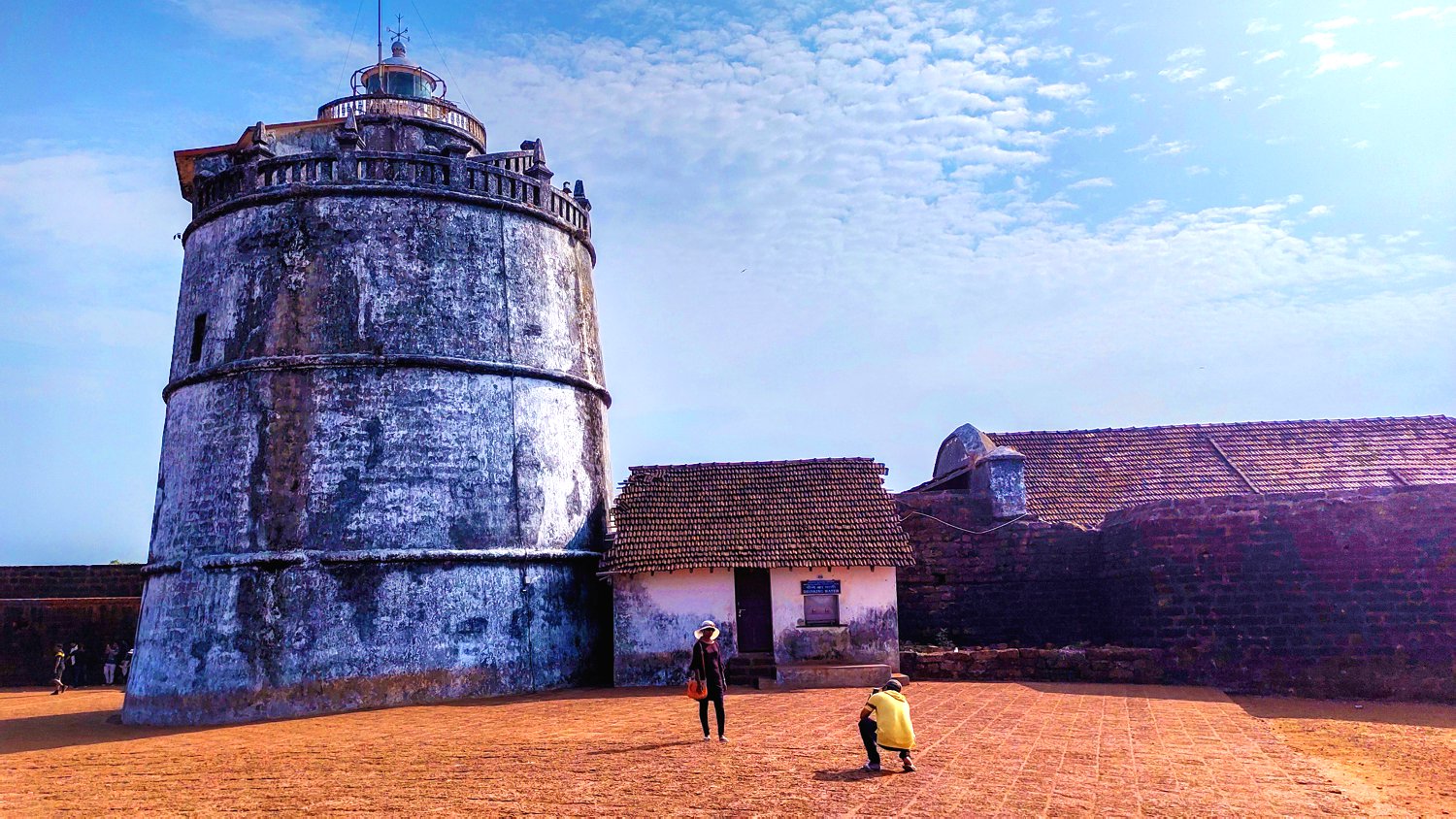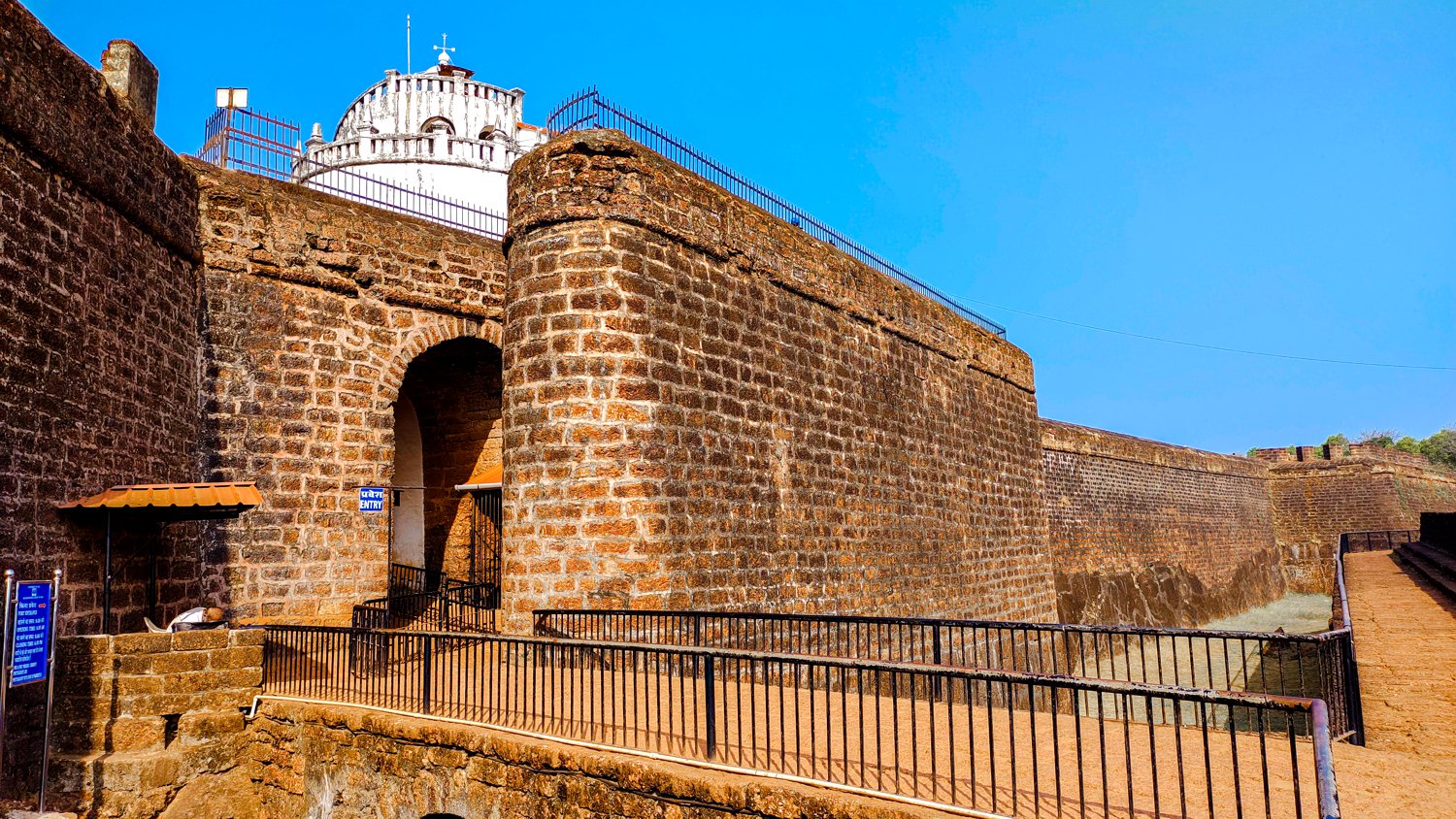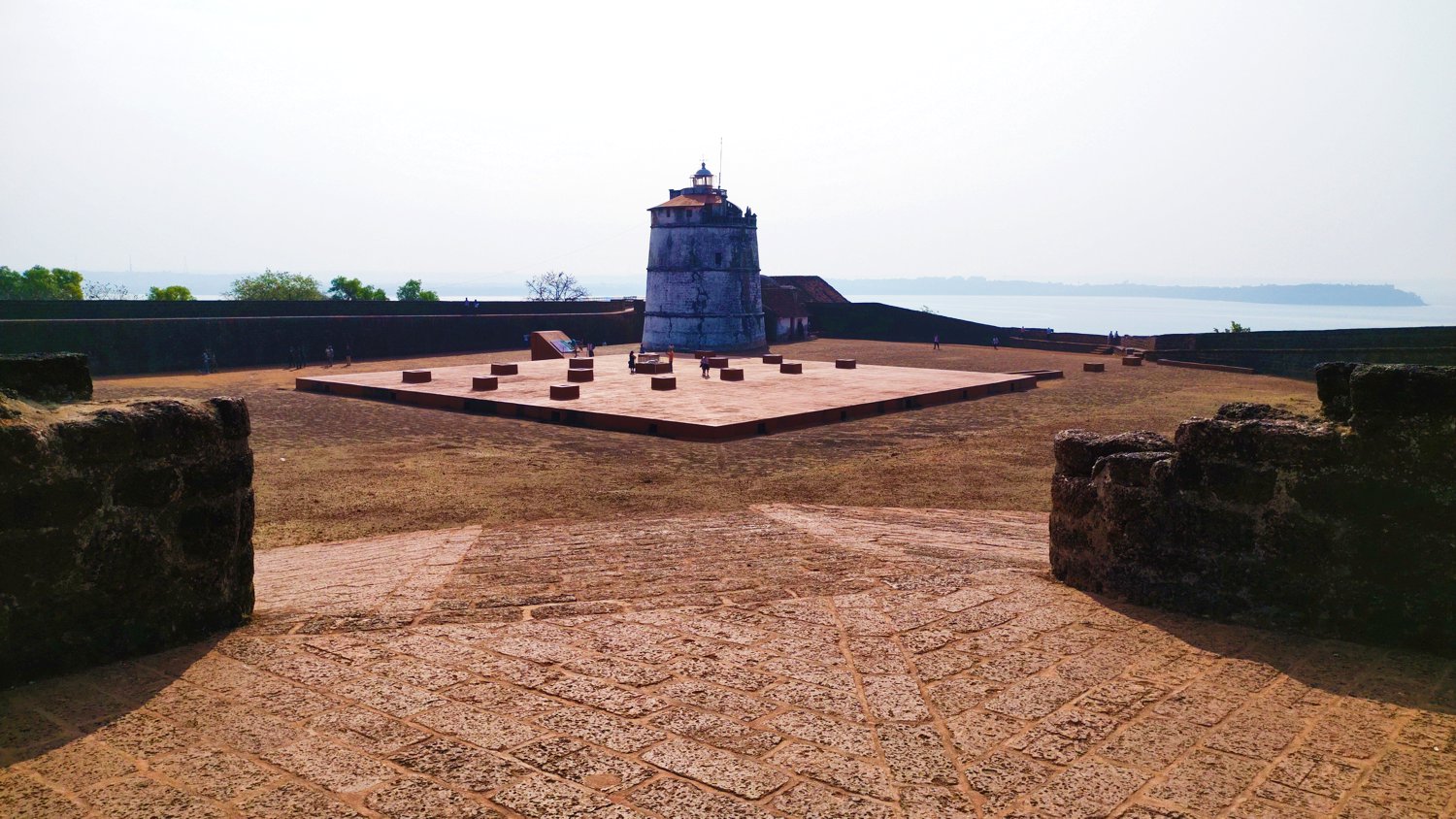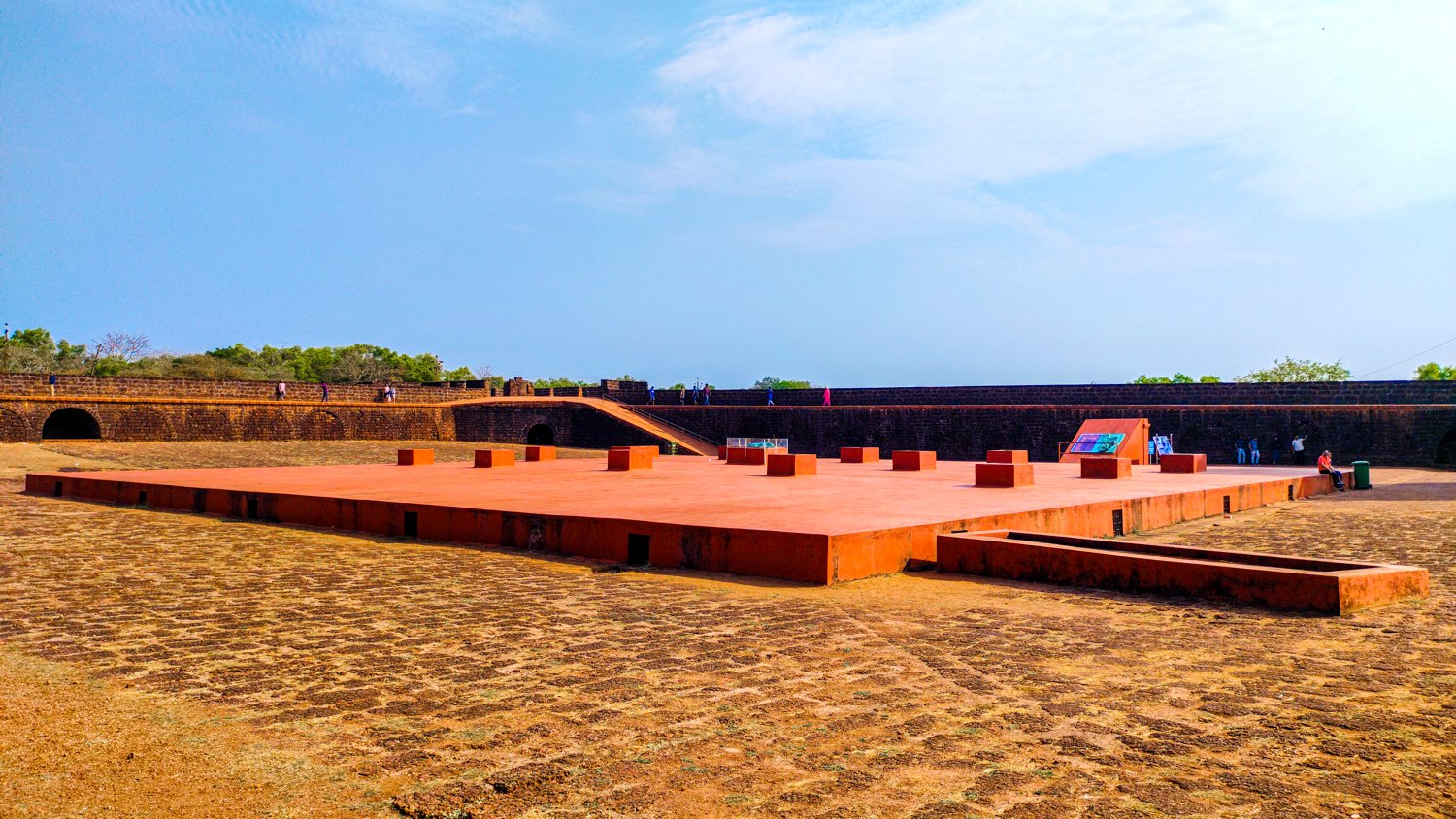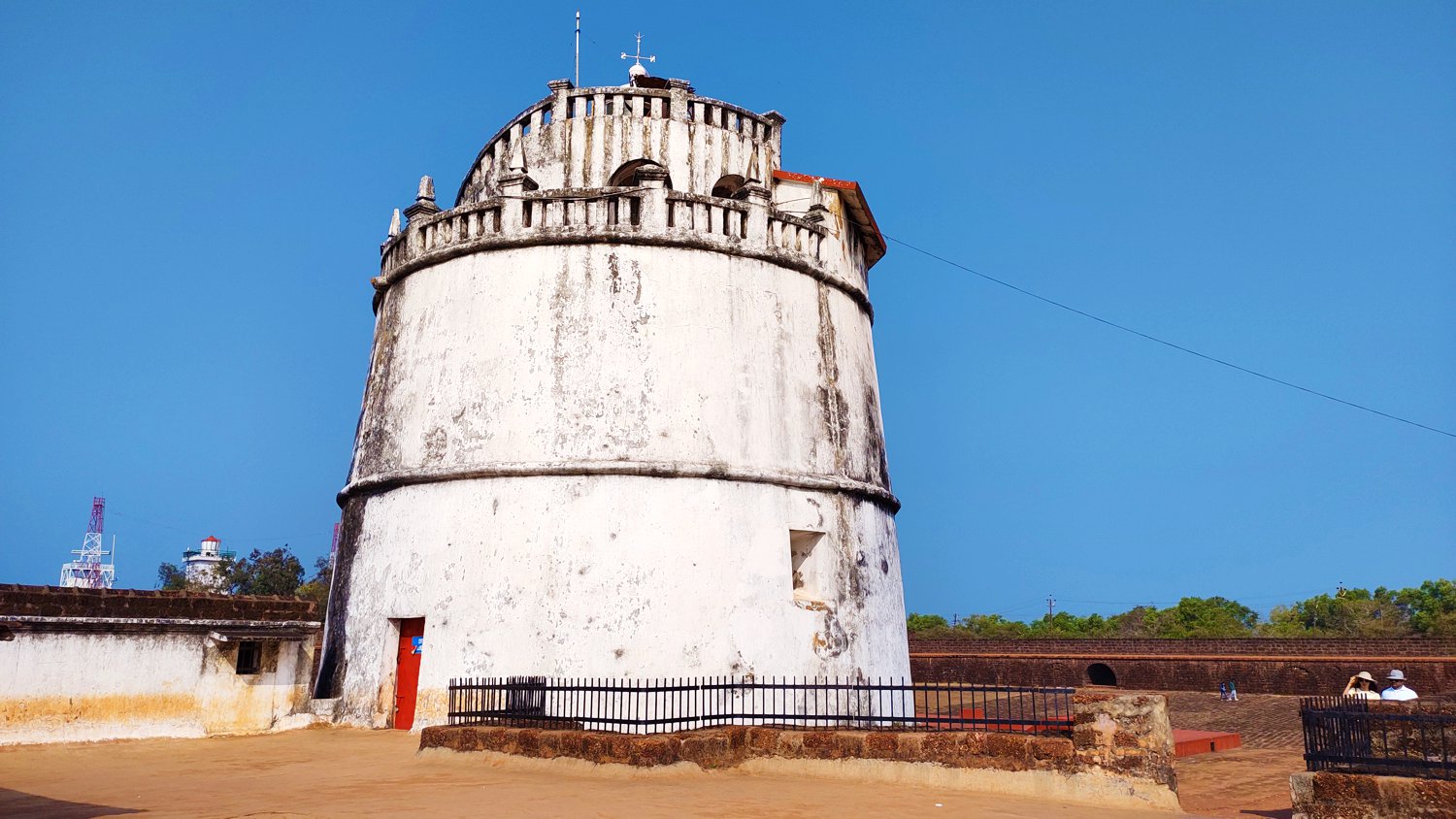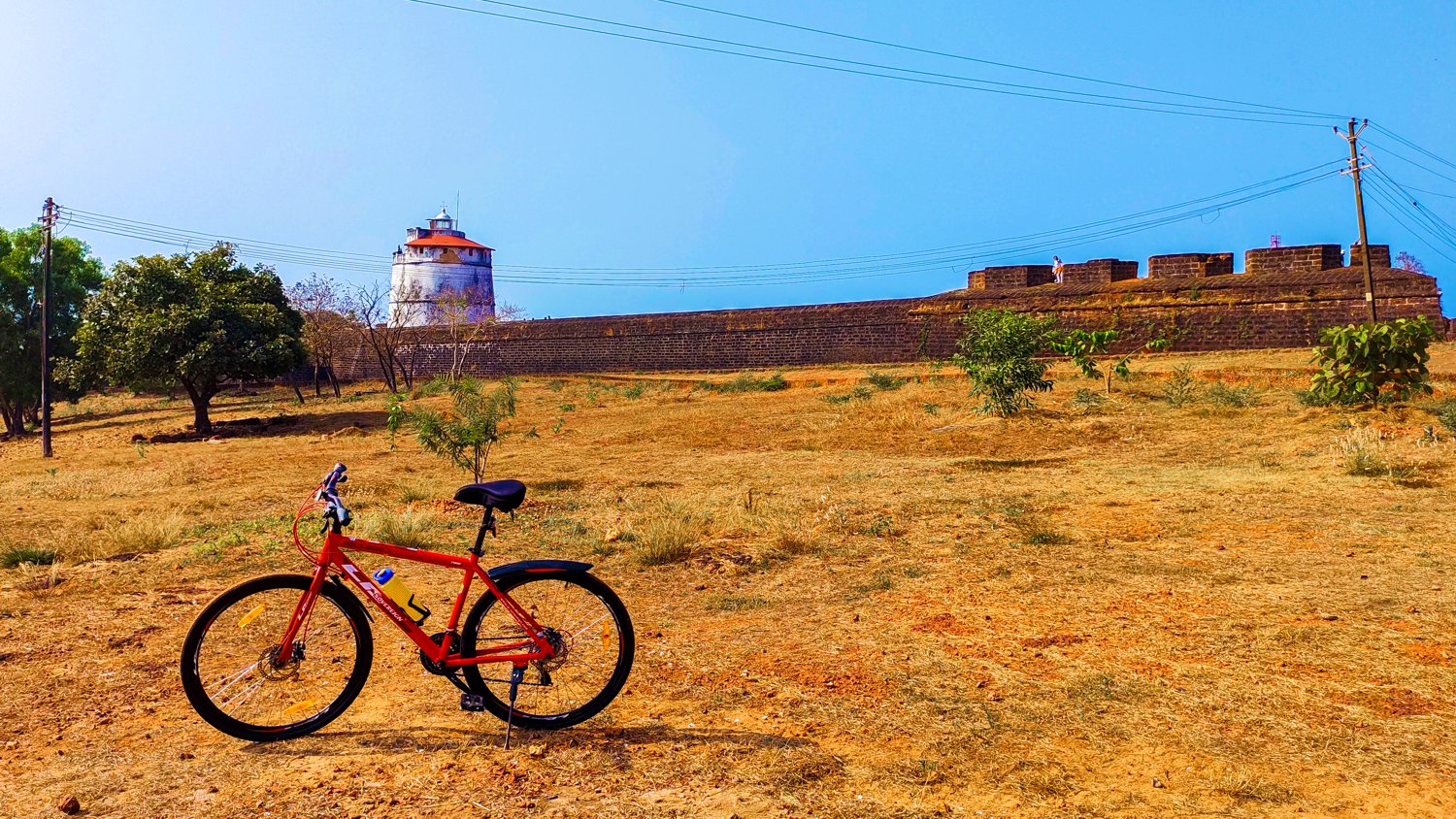
One of the largest Portuguese fortresses in the subcontinent, Aguada is a great example of 17th-century military architecture that stands fairly intact. Named for the fresh water spring that gives the fort a constant supply of potable water, ‘Agua’ being the Portuguese word for water and ‘Aguada’ signifying a place where water is collected.
The foundations were laid in 1604 and the basic fortifications were complete around 1606, under the supervision of the celebrated engineer Julio Simao, after a Dutch fleet of seven ships arrived and anchored in a bay here for a month, immune to the guns of both the Reis Magos and Gaspar Dias forts. The Estado was shocked at this gap in their defences, and the result was two formidable new citadels, Mormugao on the mouth of the Zuari, and Aguada.
Divided in two segments: the upper part acted as fort and watering station, while the lower part served as a safe berth for Portuguese ships. In addition to an enormous cistern in which over two and quarter million gallons of water could be stored, one of the biggest freshwater storage of the time in whole of Asia, the fort also contained a formidable citadel, secret passageways and a massive grand stand that once had 79 canons in place.
A 13 mt four storeyed high lighthouse built in 1864 is the most iconic landmark of the fort. Featured in many movies shot here, it is the oldest of its kind in Asia. It originally used a lamp lit by wicks dipped in coconut oil, which was functional only in the dry months. In 1841 this system was replaced by a mechanical lamp, which would flash every seven minutes. In 1864 this was replaced by the catoptric rotating kind of lamp, which could flash every 30 seconds. In 1906, it was further improved. Although this lighthouse fell into disuse in 1976 and it is now closed to the public, there is a new lighthouse built closer to the edge of the cliff, called the Aguada Lighthouse and DGPS. One can, for a small fee, climb the steps of the lighthouse and enjoy the view of the areas surrounding the fort.
Fort Aguada was the most prized and crucial fort of Portuguese. The fort is so large that it envelops the entire peninsula at the southwestern tip of Bardez. Built on the mouth of Mandovi River, it was strategically located and was the chief defense of Portuguese against the Dutch and Marathas. Aguada was never captured until the British occupied it during the Napoleonic wars from 1804 to 1813.
During the Salazar Administration, the lower fort was repurposed for use as a prison to house political prisoners and after liberation was used as Goa’s Central Jail till 2015. Presently the jail is under renovation to turn it into a museum and closed to visitors.
A great deal of land within the outer fortifications, especially on the north and north-west, is today occupied by hotels, restaurants and some private residences.
Open all days of the week from 9.30am to 6.00pm, entry ticket to the fort cost Rs. 25 per person. Since its was first time I visited the fort I took the opportunity to go inside and click some photos.
PS: There are couple of free drinking water stations inside, unfortunately none worked.
